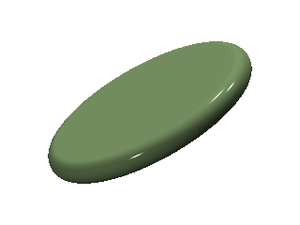Oblate hard spherocylinders: Difference between revisions
Jump to navigation
Jump to search
Carl McBride (talk | contribs) m (Started page) |
Carl McBride (talk | contribs) mNo edit summary |
||
| Line 1: | Line 1: | ||
[[Image:oblate_spherocylinder.png|thumb|right]] | [[Image:oblate_spherocylinder.png|thumb|right]] | ||
The '''oblate hard spherocylinder''' model, also known as a discotic spherocylinder, consists of an impenetrable cylinder, surrounded by a torus. | The '''oblate hard spherocylinder''' model, also known as a discotic spherocylinder, consists of an impenetrable cylinder, surrounded by a torus. | ||
In the limit of zero diameter the oblate hard spherocylinder becomes a [[hard sphere model | hard sphere]], and in the limit of zero width one has the [[Hard disks in a three dimensional space | hard disk]]. A closely related model is that of the [[hard spherocylinders | hard spherocylinder]]. | |||
==See also== | ==See also== | ||
*[[Discotic liquid crystals]] | *[[Discotic liquid crystals]] | ||
Revision as of 12:30, 2 March 2011

The oblate hard spherocylinder model, also known as a discotic spherocylinder, consists of an impenetrable cylinder, surrounded by a torus. In the limit of zero diameter the oblate hard spherocylinder becomes a hard sphere, and in the limit of zero width one has the hard disk. A closely related model is that of the hard spherocylinder.
See also
References
- Related reading